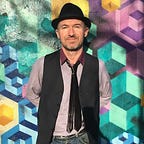Five Misconceptions About Creativity
I am not a creative person: this is perhaps the most common of them all. There is the assumption that creativity is a talent we are born with. This is simply not true, it is merely something we have to open our eyes to. Every human has the innate capacity for creative living and everyone expresses it differently. The question is how far are you willing to develop it? The sky is the limit.
“The artist is not a special kind of person; rather each person is a special kind of artist.” — Ananda Coomaraswamy
I’ve outgrown it: Whilst this can have a partial reality, the implication usually is creativity has disappeared from our lives altogether. We all had a fantastic imagination when we were a kid. At some point it gets stamped out of us and we start to believe the propaganda we’re sold. Remember being told It’s time to grow up? Slowly but surely we get socialised to be become productive workers. Research carried out in the 1960’s indicates that “non-creative behavior is learned.” (1)
We may have learned to no longer notice or engage our creativity but it’s capacity is our birthright. In reawakening our creativity we have to tap back into our sense of wonder, interest and play. Takes risks,be open to new experiences. There is a bottomless pit of creativity inside you, just screaming to get out!
“Imagination is more important than knowledge.” — Albert Einstein
Creativity can’t earn me a living: We might have got away with this kind of belief at one point, but not any longer. Having a strong capacity for creative application is becoming crucial in the modern day competitive workplace. In times of economic hardship the bottom line becomes ‘how we can get more from less’. Anyone involved in the restructuring of a business will tell you how important the need for creativity is. Even as far back as 1956, the IBM Executive School built it’s entire curriculum around creative principles. CEO,Tom Watson Jr hired Louis R. Mobley who had the foresight to see executives needed to be taught how think creatively rather than being lost in financial forecasts. A manager or business owner without effective creative problem solving skills is at a huge disadvantage.
“Over the last decades, innovation and creativity have become critical skills for achieving success in developed economies. The need for creative problem solving has arisen as more and more management problems require creative insights in order to find suitable solutions. Creativity goes hand in hand with innovation” — Siyana (Belichovska) Sokolova
I haven’t got time: Really? Can we not find 10 minutes a day to write a journal, draw a picture? Map out a project you are working on? It’s interesting to reflect on how we see creativity. It doesn’t have to be an act of producing solitary pieces of work but rather a mindset of how we meet whatever we are doing. The more we practice creative ways of seeing and engaging with the world, the more it becomes systemic. We slowly move from reactive thinking to creative thinking.
“Creativity is inventing, experimenting, growing, taking risks, breaking rules, making mistakes, and having fun.” — Mary Lou Cook
I don’t need creativity in my life: This is of course personal choice. Before you cement this into your mind however, let me give a few reasons why you might want creativity into your life. There is an ever growing body of research around the health benefits of a creative life. In can reduce anxiety and inspire better mental health.(2) it can improve physical health (3) It promotes easier learning and personal growth. We can train our creativity to weave itself into everything we do. It may not make you a millionaire but it can most definitely make you happy and bring more meaning into your life. To my mind that is priceless.
Read my related article ‘How To Develop Your Creative Thinking’
(1 — Source: George Land and Beth Jarman, Breaking Point and Beyond. San Francisco: HarperBusiness, 1993)
(2 — Source:Arts-based interventions to reduce anxiety levels among college students Ragan E. Aaron, Kimberly L. Rinehart and Natalie Ann Ceballos)
(3 — Source:The Connection Between Art, Healing, and Public Health: A Review of Current Literature Heather L. Stuckey, and Jeremy Nobel,)
